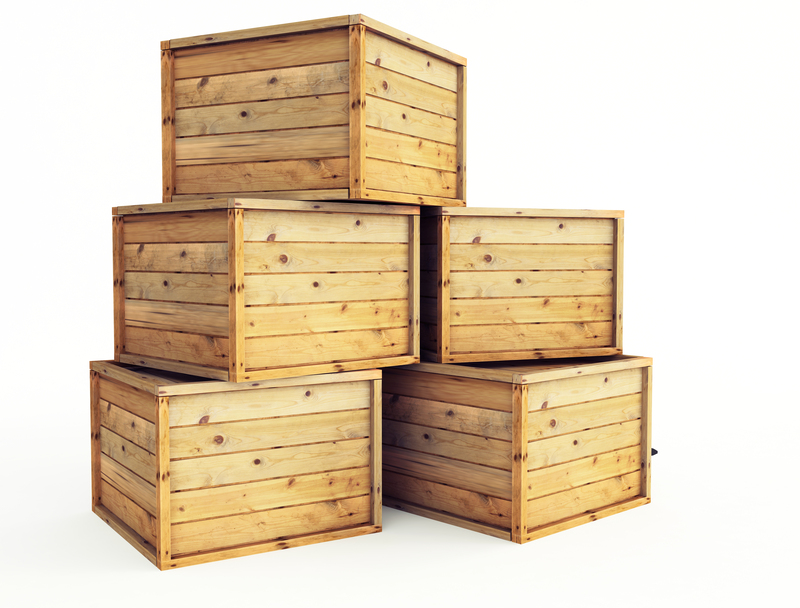Keep Your Sofa Safe from Mold and Mildew While in Storage
Mold and mildew are silent foes that can wreak havoc on furniture, especially when items like sofas are placed in storage for extended periods. Without proper care, your cherished couches and loveseats may develop unpleasant odors, unsightly stains, and even significant structural damage. To protect your sofa from mold and mildew in storage, proactive measures are essential.
Why Are Mold and Mildew a Threat to Stored Sofas?
When you choose to store your sofa, whether due to a home renovation, moving, or downsizing, the risk of mold and mildew growth increases due to limited air circulation and potential humidity in storage spaces. Mold and mildew thrive in dark, moist environments, feeding on organic materials commonly found in sofas, such as cotton, wool, leather, and padding.
Understanding Mold and Mildew: The Basics
- Mold: A type of fungus, mold appears as fuzzy or slimy patches, often in green, black, blue, or white hues. It degrades organic matter and produces a musty odor.
- Mildew: Another form of fungus, mildew typically looks powdery and white or grey. Like mold, it causes discoloration and musty smells.
- Impact on Sofas: Both can break down fibers, stain fabrics, and deteriorate cushioning over time.
What Causes Mold Growth in Stored Sofas?
- Humidity: High moisture levels are the primary catalyst for mold and mildew.
- Lack of Ventilation: Stagnant air in storage rooms or units allows excess moisture to linger.
- Pre-existing Dirt or Spills: Food crumbs, spilled drinks, and body oils left on the sofa can provide a breeding ground.
- Poor Storage Preparation: Not cleaning or covering a sofa adequately before storage sets the stage for fungal growth.

How to Prepare Your Sofa for Storage
1. Deep Clean Before Storage
Cleaning your sofa thoroughly before storage is crucial. Make sure to remove all dirt, dust, and residues, as these can contribute to mold growth.
Steps to Clean Your Sofa Properly:- Vacuum All Surfaces: Use a vacuum cleaner with an upholstery attachment to remove loose dirt, dust, and pet hair from cushions, seams, and under the sofa.
- Spot Clean Stains: Use a mild upholstery cleaner or a mixture of water and vinegar to gently blot away stains. Make sure the fabric type is compatible with your chosen cleaner.
- Let Dry Completely: Never store a damp or wet sofa. Allow it dry out in a well-ventilated area, ideally in direct sunlight for several hours, to ensure all moisture is gone.
2. Disassemble When Possible
Disassemble your sofa if it allows--remove cushions, legs, or modular components. This reduces contact points where moisture can accumulate and makes cleaning inside crevices easier.
3. Treat with Fabric Protector
Consider applying a fabric protector spray to discourage mold, mildew, and future stains. Ensure it is safe for your sofa's upholstery. These sprays create a thin barrier against moisture and fungal spores.
Choose the Right Storage Environment
1. Opt for Climate-Controlled Storage
Climate-controlled storage units maintain a consistent temperature and humidity level, greatly reducing the risk of mold and mildew on stored furniture. This investment is worth every penny if you're storing your sofa for several months or longer.
- Ideal humidity: 30%-50% relative humidity
- Ideal temperature: 55-80?F (13-27?C)
2. Never Store Directly on the Floor
Floors in garages, basements, and even self-storage facilities can harbor moisture. Place your sofa on wooden pallets, blocks, or risers to elevate it and keep air circulating beneath.
3. Allow for Airflow
Position your sofa to allow space around it--avoid pressing it flush against walls. This encourages ventilation and reduces humid microclimates that foster mold growth.
How to Wrap Your Sofa for Protection
1. Avoid Plastic Wrap for Long-Term Storage
Although plastic sheets might seem like a good idea, they trap moisture, allowing mold to flourish. Instead, cover your sofa with breathable materials:
- Cotton sheets
- Moving blankets
- Specialized furniture covers designed for breathability
These covers protect against dust while allowing moisture to escape.
2. Loosely Drape Covers
Don't wrap too tightly. Airflow is still important. Leave the bottom open to allow for continued ventilation.
Extra Steps to Keep Your Sofa Safe from Mold and Mildew While in Storage
1. Use Moisture Absorbers and Dehumidifiers
Silica gel packs, activated charcoal, and commercial dehumidifiers are powerful tools for controlling humidity. Place them near and even under your sofa. Regularly replace moisture absorbers to ensure ongoing effectiveness.
2. Regular Inspections
If possible, check on your stored sofa periodically. Pay attention to musty odors, visible spots, or signs of excess moisture. Quick intervention can save your sofa from irreversible mold and mildew damage.
3. Ventilate Whenever Possible
When visiting your storage unit, prop the door open for a while to improve air circulation. If the storage facility allows, run a fan periodically.
What to Do If You Spot Mold or Mildew During Storage
1. Remove the Sofa from Storage
The first step is to take the sofa out and place it in a sunny, well-ventilated area. Sunlight has natural anti-mold properties and helps dry out the fabric faster.
2. Clean Affected Areas Promptly
- For Fabric Sofas: Mix equal parts white vinegar and water, gently blotting and scrubbing the area. Avoid soaking.
- For Leather Sofas: Use a damp cloth with a few drops of mild dish soap. Dry with a clean towel and condition the leather afterward.
- Allow to dry thoroughly before returning the sofa to storage.
3. Use an Antifungal Spray
After cleaning, use an upholstery-safe antifungal spray to eliminate any remaining spores and prevent future outbreaks.
Key Tips for Storing Different Types of Sofas
Upholstered Sofas
- Ensure complete dryness before covering and storing.
- Focus on cleaning in between cushions and crevices, as these are mold hotspots.
Leather Sofas
- Apply a leather conditioner before storage to prevent drying and cracking.
- Keep away from direct heat sources in storage, as fluctuating temperatures may promote mold or mildew.
Wood-Framed Sofas
- Check wooden legs and arms for prior mold before storage.
- Consider applying a wood preservative or polish for extra protection.
Bonus Advice: Preparing Storage Areas Against Mold
- Clean the storage unit or room thoroughly, removing all traces of dust, dirt, and prior moisture.
- Use a portable dehumidifier or desiccant packs year-round to monitor moisture levels.
- If possible, use storage shelves to further elevate your sofa and other furniture.
- Seal any obvious cracks or leaks that could let in rainwater or damp air.
- Install a small, battery-powered fan for improved air movement in non-electric storage rooms.
Frequently Asked Questions: Sofa Storage and Mold Prevention
Is it safe to use plastic furniture covers?
Only for very temporary situations (like moving). For long-term storage, plastic traps moisture, making it a poor choice. Stick with breathable fabric covers.
How often should I check my sofa in storage?
If possible, check once a month for any signs of mold, mildew, or pest infestation.
What's the best way to remove mold smell from a sofa?
After cleaning with vinegar solution or upholstery cleaner, sprinkle baking soda on affected areas. Let it sit overnight, then vacuum thoroughly. Allow to air dry fully before covering and returning to storage.
Can I store my sofa in a basement or garage?
Basements and garages often have higher humidity and temperature fluctuations. If these are the only options available, take extra precautions: elevate your sofa, use a dehumidifier, and check regularly for moisture.
How do I protect sofa cushions from mold in storage?
- Remove and clean cushions separately; let dry completely.
- Store cushions standing on edge to maximize airflow.
- Bag individual cushions in breathable cotton bags if possible.

The Importance of Preventing Mold and Mildew Damage
Moldy odors and visible contamination are only the beginning of the problems. Mold and mildew can break down upholstery fibers, structurally compromise frames, and even trigger allergies or respiratory issues. The cost of cleaning or replacing a sofa affected by severe mold is far higher than effective prevention.
To keep your sofa safe from mold and mildew while in storage, combining thorough cleaning with a climate-controlled environment, regular inspections, and proper wrapping methods is your best strategy. Invest a little time and attention before and during storage, and your sofa will remain fresh, clean, and ready for use--no matter how long it's been stored away.
Conclusion: Enjoy a Mold-Free Sofa After Storage
Whether you're storing your couch during a move or simply freeing up space for a while, taking extra care to protect your sofa from mold and mildew in storage is a smart move. By prioritizing cleaning, moisture control, ventilation, and the right kind of covering, you'll keep your sofa looking and smelling its best for years to come. Remember, proactive prevention is easier and far less expensive than remediation or replacement. Safeguard your comfort and investment with these tips, and your sofa will be mold-free and ready to enjoy whenever you need it again!
- Clean thoroughly before storage
- Use breathable covers and avoid plastic
- Choose climate-controlled, dry storage options
- Add moisture absorbers and check regularly
Keep your sofa safe from mold and mildew while in storage--and enjoy peace of mind!



